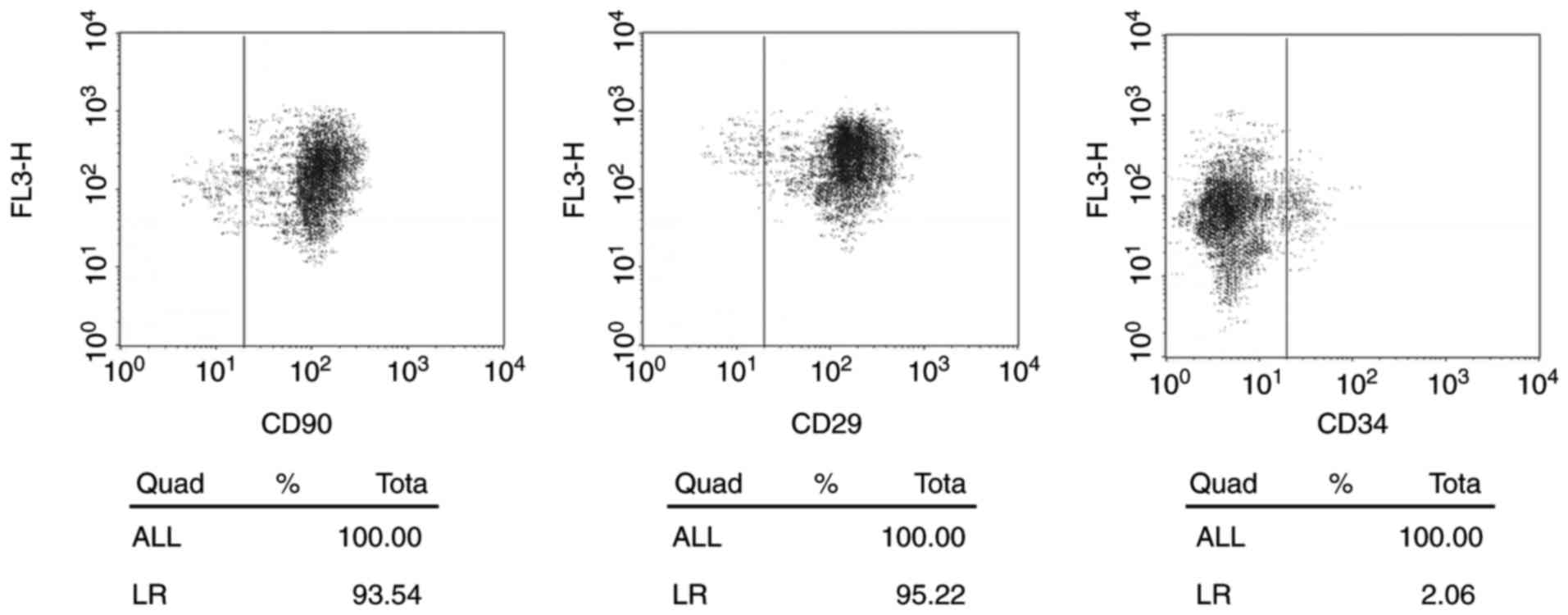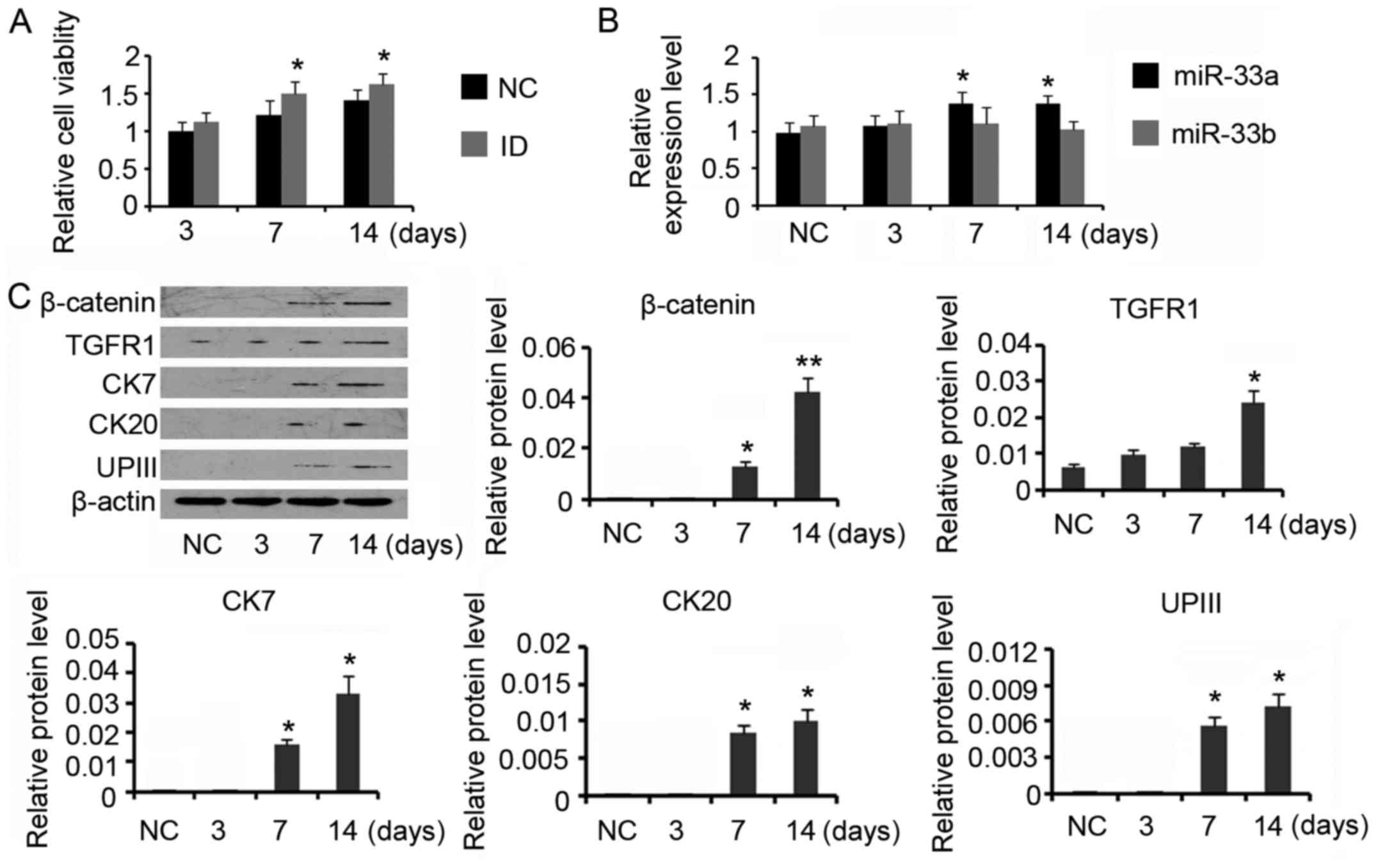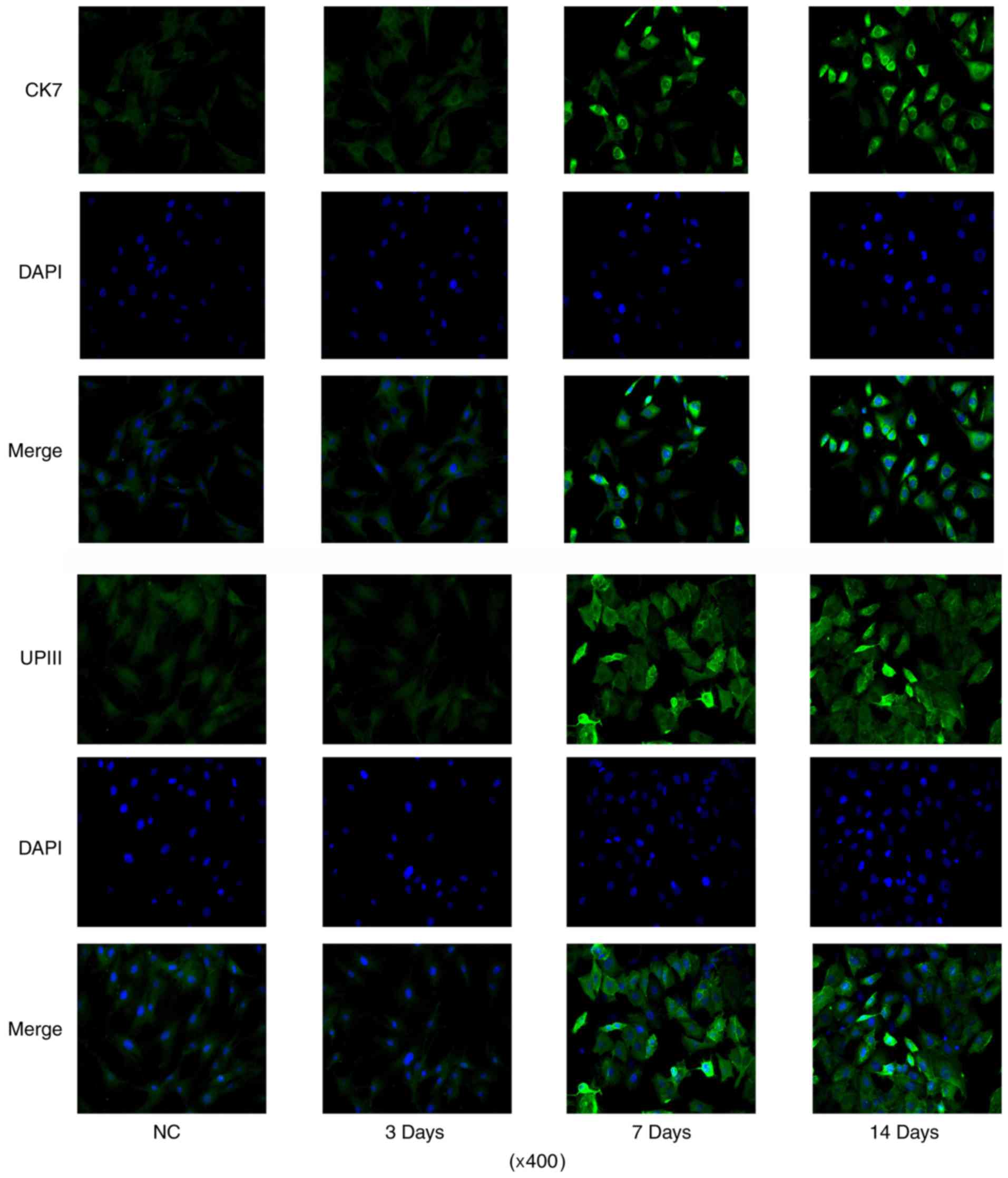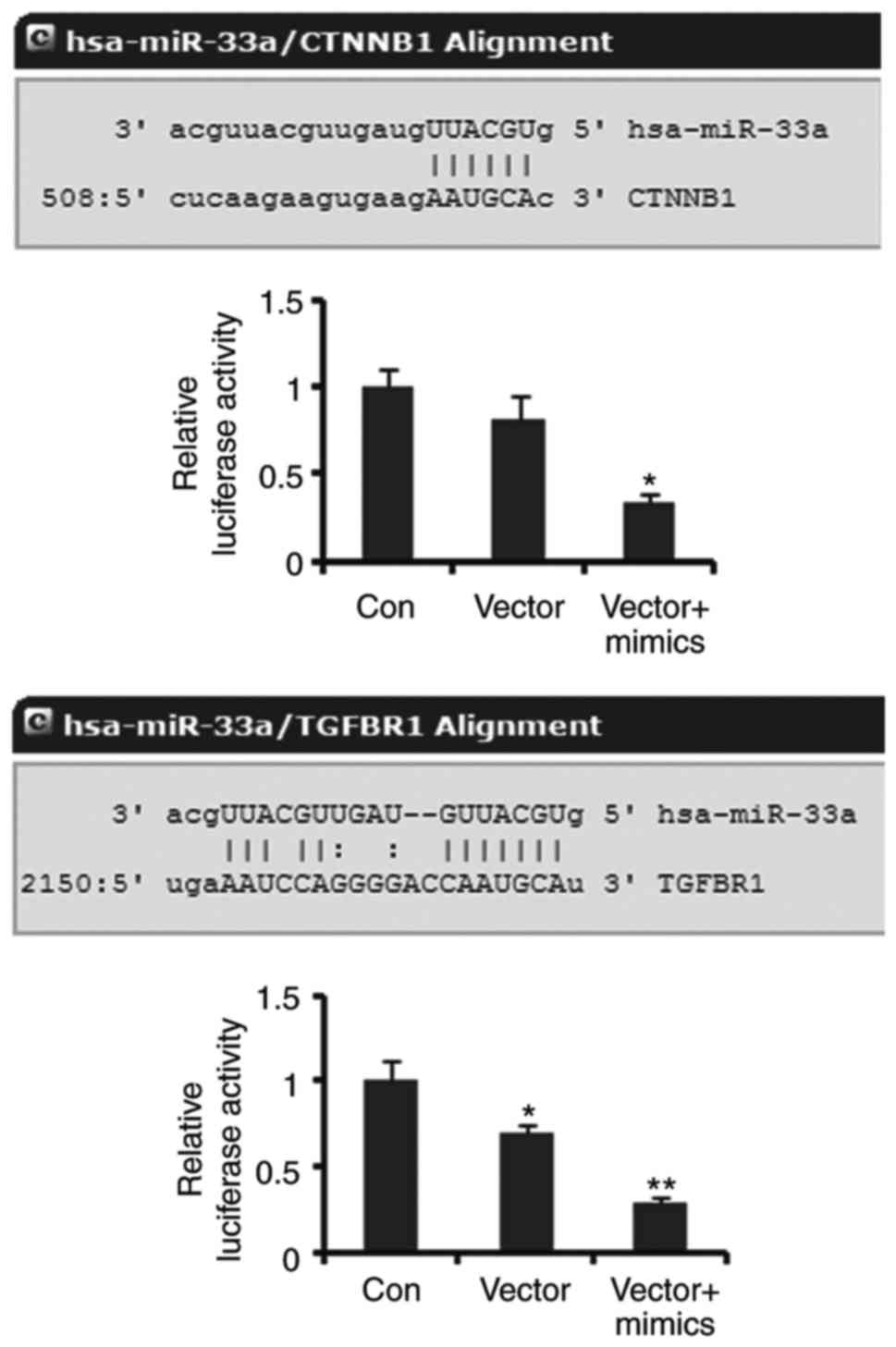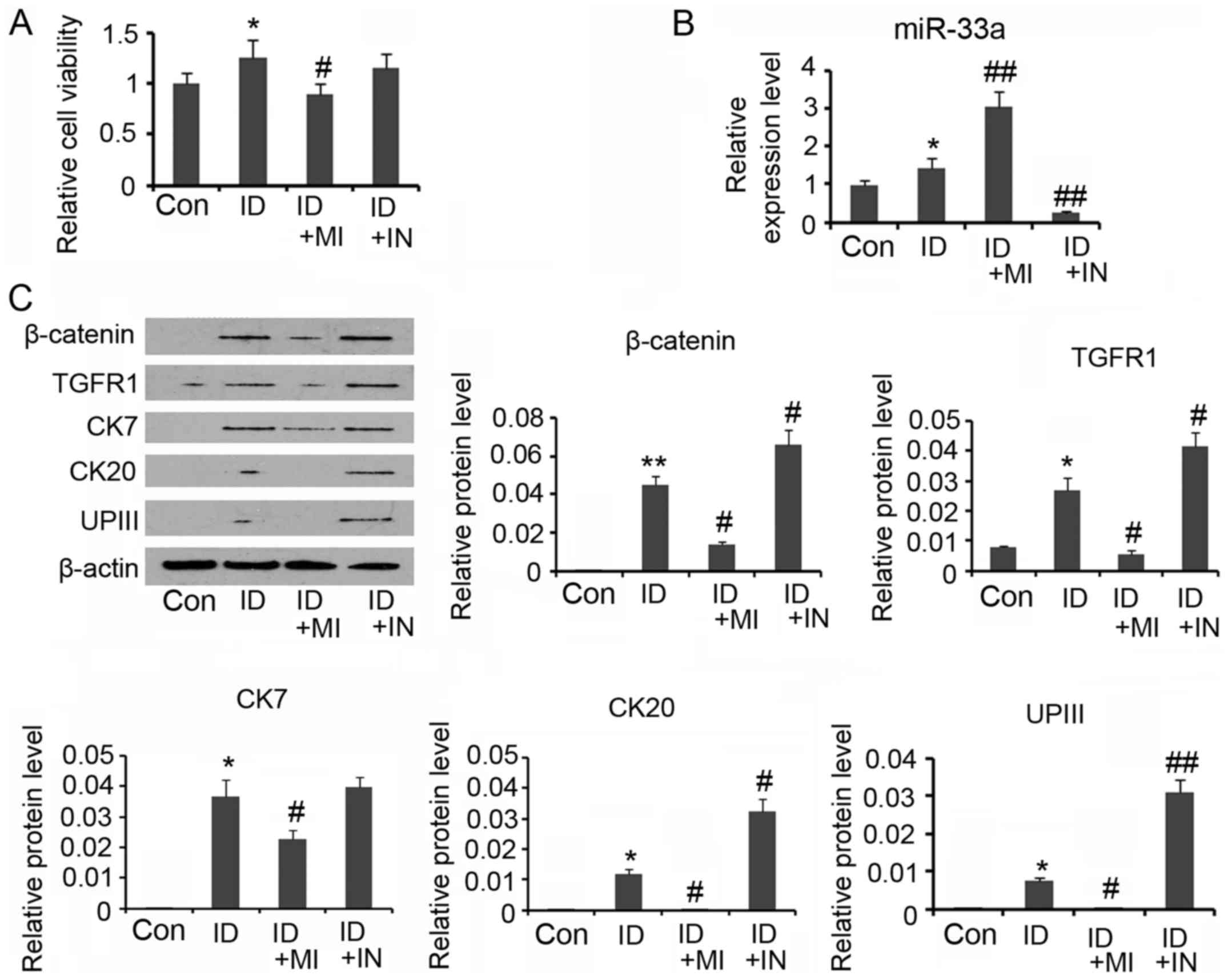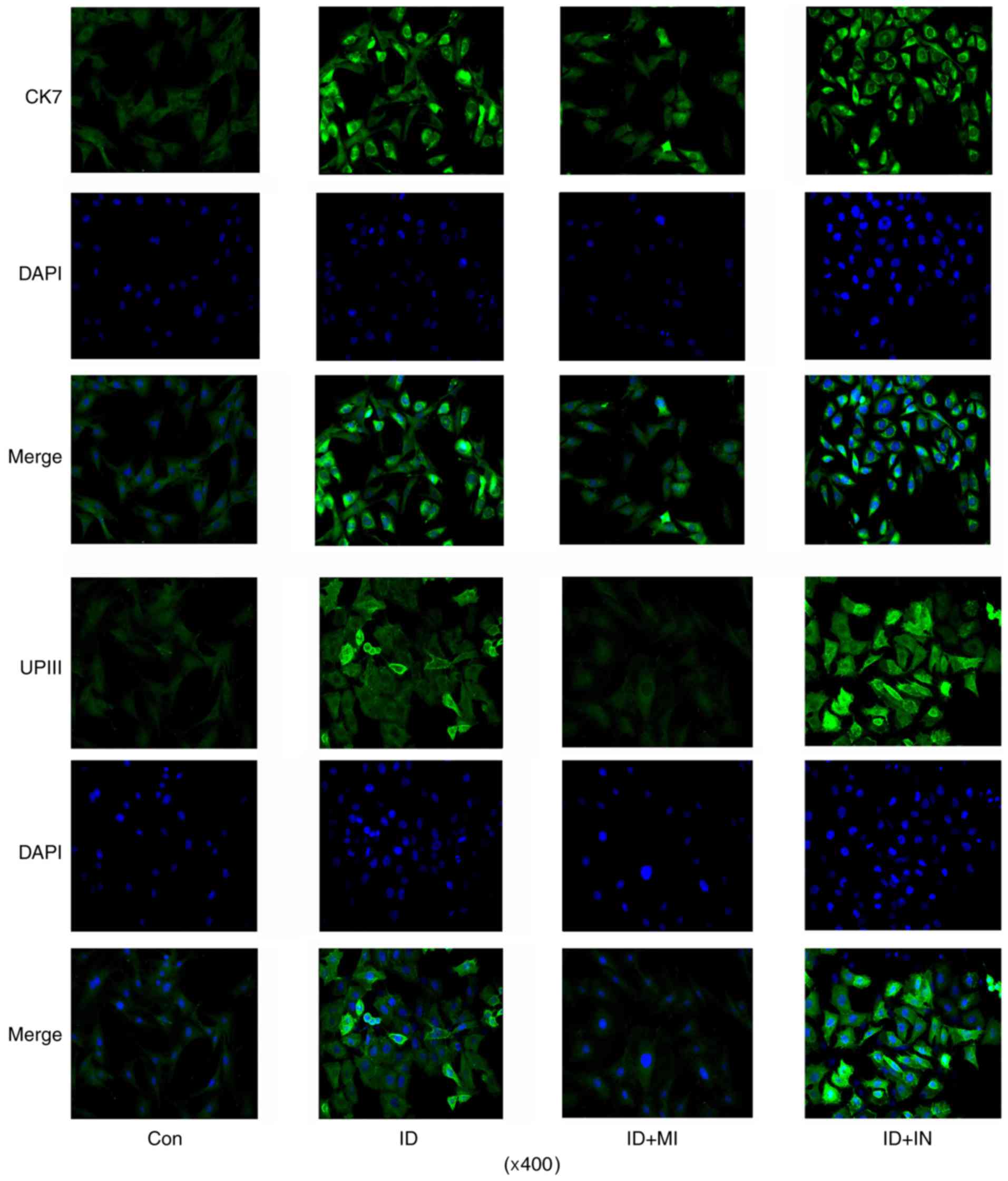|
1
|
Orabi H, Bouhout S, Morissette A, Rousseau
A, Chabaud S and Bolduc S: Tissue engineering of urinary bladder
and urethra: Advances from bench to patients.
ScientificWorldJournal. 2013:1545642013. View Article : Google Scholar : PubMed/NCBI
|
|
2
|
Steins A, Dik P, Müller WH, Vervoort SJ,
Reimers K, Kuhbier JW, Vogt PM, van Apeldoorn AA, Coffer PJ and
Schepers K: In vitro evaluation of spider silk meshes as a
potential biomaterial for bladder reconstruction. PLoS One.
10:e01452402015. View Article : Google Scholar : PubMed/NCBI
|
|
3
|
Li H, Xu Y, Xie H, Li C, Song L, Feng C,
Zhang Q, Xie M, Wang Y and Lv X: Epithelial-differentiated
adipose-derived stem cells seeded bladder acellular matrix grafts
for urethral reconstruction: An animal model. Tissue Eng Part A.
20:774–784. 2014.PubMed/NCBI
|
|
4
|
Tanthaisong P, Imsoonthornruksa S,
Ngernsoungnern A, Ngernsoungnern P, Ketudat-Cairns M and Parnpai R:
Enhanced chondrogenic differentiation of human umbilical cord
wharton's jelly derived mesenchymal stem cells by GSK-3 inhibitors.
PLoS One. 12:e01680592017. View Article : Google Scholar : PubMed/NCBI
|
|
5
|
Ni J, Shi Y, Li L, Chen J, Li L, Li M, Zhu
J, Zhu Y and Fan G: Cardioprotection against heart failure by
shenfu injection via TGF-β/Smads signaling pathway. Evid Based
Complement Alternat Med. 2017:70830162017. View Article : Google Scholar : PubMed/NCBI
|
|
6
|
Touboul T, Chen S, To CC, Mora-Castilla S,
Sabatini K, Tukey RH and Laurent LC: Stage-specific regulation of
the WNT/β-catenin pathway enhances differentiation of hESCs into
hepatocytes. J Hepatol. 64:1315–1326. 2016. View Article : Google Scholar : PubMed/NCBI
|
|
7
|
Chuang JH, Tung LC and Lin Y: Neural
differentiation from embryonic stem cells in vitro: An overview of
the signaling pathways. World J Stem Cells. 7:437–447. 2015.
View Article : Google Scholar : PubMed/NCBI
|
|
8
|
Heck BE, Park JJ, Makani V, Kim EC and Kim
DH: PPAR-δ agonist with mesenchymal stem cells induces type II
collagen-producing chondrocytes in human arthritic synovial fluid.
Cell Transplant. 26:1405–1417. 2017. View Article : Google Scholar : PubMed/NCBI
|
|
9
|
Ventayol M, Viñas JL, Sola A, Jung M,
Brüne B, Pi F, Mastora C and Hotter G: miRNA let-7e targeting MMP9
is involved in adipose-derived stem cell differentiation toward
epithelia. Cell Death Dis. 5:e10482014. View Article : Google Scholar : PubMed/NCBI
|
|
10
|
Wang H, Sun Z, Wang Y, Hu Z, Zhou H, Zhang
L, Hong B, Zhang S and Cao X: miR-33-5p, a novel mechano-sensitive
microRNA promotes osteoblast differentiation by targeting Hmga2.
Sci Rep. 6:231702016. View Article : Google Scholar : PubMed/NCBI
|
|
11
|
Liang G, Malmuthuge N, McFadden TB, Bao H,
Griebel PJ, Stothard P and Guan le L: Potential regulatory role of
microRNAs in the development of bovine gastrointestinal tract
during early life. PLoS One. 9:e925922014. View Article : Google Scholar : PubMed/NCBI
|
|
12
|
Price NL and Fernández-Hernando C: miRNA
regulation of white and brown adipose tissue differentiation and
function. Biochim Biophys Acta. 1861:2104–2110. 2016. View Article : Google Scholar : PubMed/NCBI
|
|
13
|
Naaijkens BA, Niessen HW, Prins HJ,
Krijnen PA, Kokhuis TJ, de Jong N, van Hinsbergh VW, Kamp O, Helder
MN, Musters RJ, et al: Human platelet lysate as a fetal bovine
serum substitute improves human adipose-derived stromal cell
culture for future cardiac repair applications. Cell Tissue Res.
348:119–130. 2012. View Article : Google Scholar : PubMed/NCBI
|
|
14
|
Zhao Z, Yu H, Fan C, Kong Q, Liu D and
Meng L: Differentiate into urothelium and smooth muscle cells from
adipose tissue-derived stem cells for ureter reconstruction in a
rabbit model. Am J Transl Res. 8:3757–3768. 2016.PubMed/NCBI
|
|
15
|
Shi JG, Fu WJ, Wang XX, Xu YD, Li G, Hong
BF, Hu K, Cui FZ, Wang Y and Zhang X: Transdifferentiation of human
adipose-derived stem cells into urothelial cells: Potential for
urinary tract tissue engineering. Cell Tissue Res. 347:737–746.
2012. View Article : Google Scholar : PubMed/NCBI
|
|
16
|
Wu S, Cheng Z, Liu G, Zhao X, Zhong L, Zhu
Y and Zhu J: Urothelial differentiation of human umbilical
cord-derived mesenchymal stromal cells in vitro. Anal Cell Pathol
(Amst). 36:63–69. 2013. View Article : Google Scholar : PubMed/NCBI
|
|
17
|
Smith Q, Chan XY, Carmo AM, Trempel M,
Saunders M and Gerecht S: Compliant substratum guides endothelial
commitment from human pluripotent stem cells. Sci Adv.
3:e16028832017. View Article : Google Scholar : PubMed/NCBI
|
|
18
|
Leach LL, Buchholz DE, Nadar VP,
Lowenstein SE and Clegg DO: Canonical/β-catenin Wnt pathway
activation improves retinal pigmented epithelium derivation from
human embryonic stem cells. Invest Ophthalmol Vis Sci.
56:1002–1013. 2015. View Article : Google Scholar : PubMed/NCBI
|
|
19
|
Lian X, Bao X, Al-Ahmad A, Liu J, Wu Y,
Dong W, Dunn KK, Shusta EV and Palecek SP: Efficient
differentiation of human pluripotent stem cells to endothelial
progenitors via small-molecule activation of WNT signaling. Stem
Cell Reports. 3:804–816. 2014. View Article : Google Scholar : PubMed/NCBI
|
|
20
|
Mysorekar IU, Isaacson-Schmid M, Walker
JN, Mills JC and Hultgren SJ: Bone morphogenetic protein 4
signaling regulates epithelial renewal in the urinary tract in
response to uropathogenic infection. Cell Host Microbe. 5:463–475.
2009. View Article : Google Scholar : PubMed/NCBI
|
|
21
|
Li X, Wang Y, Sharif-Afshar AR, Uwamariya
C, Yi A, Ishii K, Hayward SW, Matusik RJ and Bhowmick NA:
Urothelial transdifferentiation to prostate epithelia is mediated
by paracrine TGF-beta signaling. Differentiation. 77:95–102. 2009.
View Article : Google Scholar : PubMed/NCBI
|



